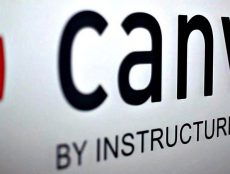
Articles
Op-Ed
Is COVID-19 Pushing Higher Ed Over the Technology Tipping Point?
By Mike Di Gregorio
January 26, 2021
The COVID-19 crisis has brought about years of technological change in a matter of months: faculty have leaned into Zoom, video recording, remote proctoring and a host of other technologies to deliver online learning in all its facets.
Arguably one of the greatest legacies of the pandemic will be the newfound openness to using technology to improve the learning experience for students, even when campuses eventually reopen.
Applying the Lessons from the Spring Semester
The pivot to emergency remote teaching in the spring of 2020 seems like a lifetime ago. The missteps and frustrations spurred a busy summer as educators invested in learning new tools and overhauling courses to improve online engagement, flexibility, and to replicate at least some sense of the community and belonging students so clearly missed when campuses first closed.
Our survey of more than 800 faculty revealed that more than 60 percent invested at least 20 hours in formal and self-directed training, with 40 percent investing more than 40 hours. Much of this time was devoted to becoming better acquainted with the tools of the trade and gaining proficiency with synchronous and asynchronous instruction.
Yet it wasn’t just about the nuts and bolts of teaching online, either. Faculty devoted time to becoming better educators, with 69 percent of respondents agreeing that the training and support they’d received over the summer aligned to pedagogies strongly associated with improved student engagement and learning outcomes.
Modest Gains, but Gains Nonetheless
While the fall 2020 semester was far from a dramatic turnaround relative to the spring, there were notable improvements. Our most recent survey of 3,000 undergraduates revealed that a slight majority felt their instructors were taking meaningful steps to make learning in the virtual classroom more active. They were promoting discussions and integrating activities to get students working and collaborating together. And, for the most part, students reported being better equipped with tools beyond email to stay connected with instructors and peers.

Perhaps the greatest criticism is that the effort suffered from a lack of consistency, with some educators seemingly content to maintain the status quo. But for those willing to embrace and sustain change, the focus on building community and making learning more active has paid dividends in significant ways.
In our research we found that students who agreed their instructors promoted active learning and collaboration were more likely to say they saw value in their higher ed investment and to have a better overall opinion of their school. The effect was even more pronounced for faculty who made a concerted effort to create a sense of community in the virtual classroom. Students who agreed that this was the case felt they were learning more effectively online. They were also more likely to stay motivated outside of class and to have a positive opinion of their school and their higher ed investment compared to the average.
More Technology Doesn’t Mean Better Learning
Of course, for most students, even with faculty time to prepare for the fall semester, online learning remains the poor cousin of in-person instruction. Feedback indicates that many felt overworked, suggesting a ‘less is more’ approach with respect to online coursework is important. The technology employed hasn’t always been up to the task, either. In fact, 80 percent of faculty reported using other digital learning tools beyond their Learning Management System (LMS) in some if not all of their classes.
This patchwork approach has been something of a drag on learning. Many students complained about the frustrations of navigating multiple systems in order to access resources, submit assignments or simply ‘attend’ class. As we move forward, standardizing on technologies purpose-built for higher education and that offer students a single destination to support their learning will go a long way in reducing friction. That goes for faculty as well.
Lasting Change
If there is a silver lining it is that the pandemic has put a premium on the need for quality instruction. It has also shown the current generation of faculty the potential of technology to transform the learning experience, even when campuses eventually reopen.
While a slight majority of educators will return to teaching in-person as soon as they are able, almost as many plan to continue using online learning to augment their course delivery. Asynchronous solutions in particular will remain highly relevant given the benefits of flexibility and supporting learning more effectively outside the classroom. The ability to easily record and share lectures is a good example and to a lesser extent, remote proctoring solutions.
Yet even within the physical classroom itself we can expect to see technology playing a bigger role. Educators express a growing desire for tools such as polling and classroom response systems to improve student engagement. The same can be said for community-building applications that allow students to connect and collaborate with each other and to stay connected with faculty in and out of class.
It’s safe to say the experiences of 2020 will reverberate across higher ed for some time to come. The emerging technical fluency gained over the past year bodes well as institutions create new learning pathways (and revenue opportunities) tailored to an increasingly diverse student population that includes many working-age adults. But to do this well will require a more holistic approach to standardizing on digital learning solutions. That and recognizing that technology alone will not be enough. To raise the bar on student learning, institutions must be equally committed to pedagogy and equipping educators with the know-how to make the most of the opportunities technology affords.
Mike Di Gregorio is the Sr. Manager of Instructional Design and Customer Education at Top Hat and holds a PhD in Political Science from McMaster University.
Featured Image: Brooke Cagle, Unsplash.








[…] features, Instructure was operating under new ownership and leadership. The formerly public company was acquired by the private equity firm Thoma Bravo in March. The initial offer met with significant shareholder opposition. Former CEO Dan Goldsmith stood to […]